Anatomy & Physiology
Total Questions : 73
Showing 25 questions, Sign in for moreAnatomy and physiology are difficult to separate because:
Explanation
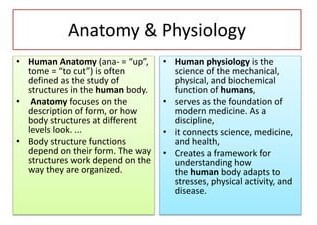
This is because anatomy and physiology are closely related branches of biology that study the structure and function of living organisms respectively.
Anatomy describes the shape, size, location, and relationships of body parts, while physiology explains how those parts work together to maintain life.
For example, the anatomy of the heart determines how it pumps blood, and the anatomy of the lungs determines how they exchange gases.
Choice B is wrong because our understanding of both anatomy and physiology is constantly changing as new discoveries are made in the field of biology.
Choice C is wrong because body parts take up space regardless of their physiological functions.
Choice D is wrong because physiological functions are not limited to an organism, but can also occur at the cellular, tissue, organ, and system levels.
A hormone that the adrenal medulla secretes is:
Explanation
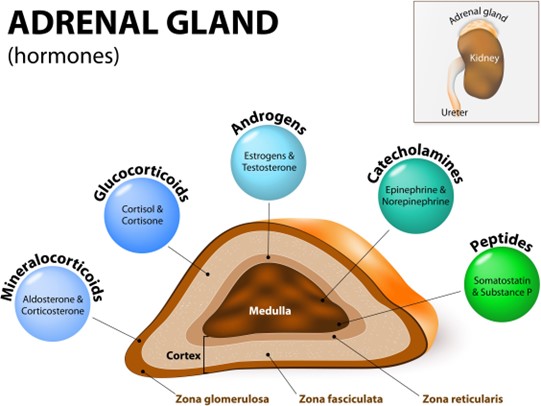
Epinephrine, also known as adrenaline, is a hormone that the adrenal medulla secretes in response to stress or low blood sugar levels.
It helps the body react to stress by increasing blood pressure, heart rate, oxygen delivery to muscles, and blood sugar levels.
Choice A is wrong because mineralocorticoids are hormones that the adrenal cortex secretes, not the adrenal medulla.
They help regulate the balance of sodium and potassium in the body.
Choice C is wrong because glucocorticoids are also hormones that the adrenal cortex secretes, not the adrenal medulla.
They help control the body’s use of fats, proteins, and carbohydrates, suppress inflammation, and regulate blood pressure and blood sugar.
Choice D is wrong because aldosterone is a specific type of mineralocorticoid that the adrenal cortex secretes, not the adrenal medulla.
It helps regulate the balance of sodium and water in the body.
After an infection, many dead and fragmented bacterial cells must be filtered from the body.
Which of the following cells will clear out the cell debris?
Explanation
Macrophages are the main cells that clear out the cell debris by phagocytosis, a process that involves recognition, engulfment, and degradation of the disposable particles.
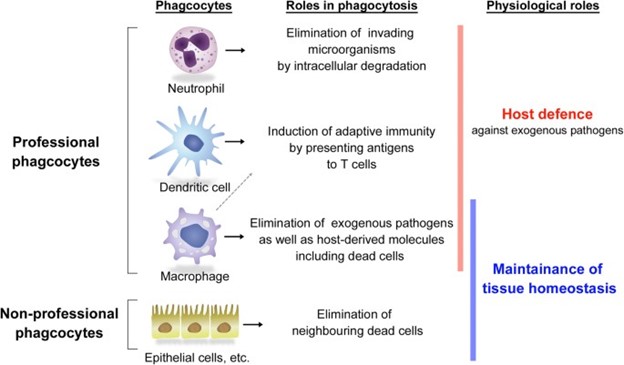
Macrophages are professional phagocytes that can be found in various tissues and organs, where they perform efferocytosis, the removal of dead and dying cells.
Choice A is wrong because lymphocytes are not phagocytes, but rather immune cells that mediate adaptive immunity by producing antibodies or killing infected cells.
Choice B is wrong because cytokines are not cells, but rather soluble molecules that regulate inflammation and immunity by acting as signals between cells.
Choice C is wrong because mast cells are not primarily involved in clearing cell debris, but rather in allergic reactions and innate immunity by releasing histamine and other mediators.
While looking at a sample of blood in a microscope, you see a purple-stained cell that is markedly larger than a red blood cell (about two to three times larger).
It has a large kidney-shaped nucleus.
What type of blood cell is this?
Explanation
A monocyte is a type of white blood cell that is markedly larger than a red blood cell and has a large kidney-shaped nucleus.
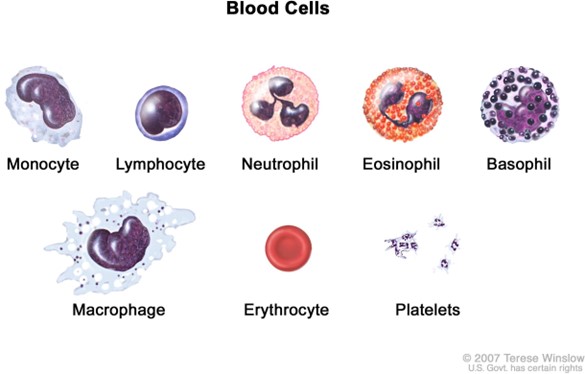
Monocytes are involved in defending the body against infectious diseases and foreign materials.
Choice B is wrong because a basophil is a type of granular white blood cell that has a lobed nucleus and stains purple with basic dyes.
Basophils are involved in allergic reactions and inflammation.
Choice C is wrong because a neutrophil is a type of granular white blood cell that has a multilobed nucleus and stains pale pink with neutral dyes.
Neutrophils are involved in phagocytosis and killing bacteria.
Choice D is wrong because an eosinophil is a type of granular white blood cell that has a bilobed nucleus and stains red-orange with acidic dyes.
Eosinophils are involved in combating parasitic infections and allergic responses. The normal ranges of different types of blood cells are:
Red blood cells: 4.5 to 5.9 million per microliter (mcL) for males, 4.1 to 5.1 million per mcL for females
White blood cells: 4,000 to 11,000 per mcL for both males and females
Platelets: 150,000 to 450,000 per mcL for both males and females
While looking at a sample of blood in a microscope, you see a cell that is markedly larger than a red blood cell.
It has a bi-lobed nucleus and is filled with red granules in the cytoplasm.
What type of blood cell is this?
Explanation
This type of blood cell is a granulocyte that has a bi-lobed nucleus and red granules in the cytoplasm.
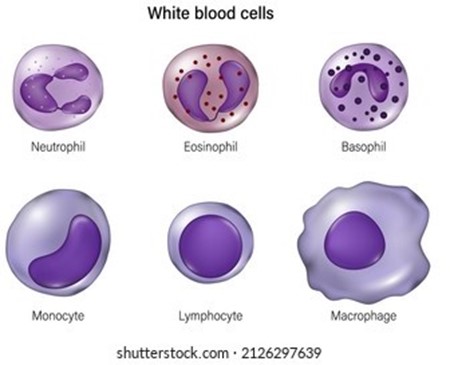
Eosinophils are involved in allergic reactions and parasitic infections.
Choice A is wrong because basophils are granulocytes that have a lobed nucleus and dark blue or purple granules in the cytoplasm.
Basophils are involved in inflammatory responses and histamine release.
Choice B is wrong because lymphocytes are agranulocytes that have a large round nucleus and a thin rim of cytoplasm.
Lymphocytes are involved in immune responses and produce antibodies.
Choice D is wrong because monocytes are agranulocytes that have a kidney-shaped nucleus and a pale blue cytoplasm.
Monocytes are involved in phagocytosis and tissue repair.
Choice E is wrong because neutrophils are granulocytes that have a multi-lobed nucleus and pale pink granules in the cytoplasm.
Neutrophils are involved in bacterial infections and inflammation.
Which of the following usually accounts for the smallest percentage of leukocytes in a blood sample?
Explanation
Basophils usually account for the smallest percentage of leukocytes in a blood sample. Basophils are a type of white blood cell that is involved in allergic reactions and inflammation.
Choice A is wrong because eosinophils are not the least common type of leukocyte.
Eosinophils are another type of white blood cell that is involved in allergic responses and parasitic infections.
They typically make up about 1-6% of the total leukocyte count.
Choice B is wrong because monocytes are not the least common type of leukocyte.
Monocytes are a type of white blood cell that can differentiate into macrophages and dendritic cells, which are important for phagocytosis and antigen presentation.
They typically make up about 2-10% of the total leukocyte count.
Choice D is wrong because neutrophils are not the least common type of leukocyte.
Neutrophils are a type of white blood cell that are the first responders to bacterial infections and tissue damage.
They typically make up about 55-70% of the total leukocyte count.
Which type of blood vessel holds the greatest volume of blood?
Explanation
Veins are the type of blood vessel that holds the greatest volume of blood and serve as reservoirs for blood.
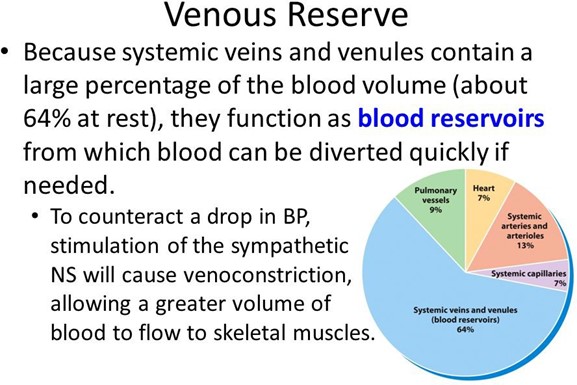
According to 1, veins contain about 70-80% of the blood volume in circulation.
Veins are also called capacitance vessels because they can expand and store more blood when needed.
Choice A. Capillary is wrong because capillaries are very thin and narrow vessels that allow the exchange of gases and nutrients between the blood and the tissues.
Capillaries have a very small volume compared to veins.
Choice C. Arteriole is wrong because arterioles are small branches of arteries that regulate blood pressure and blood flow to the capillaries.
Arterioles have a higher resistance and lower volume than veins.
Choice D. Artery is wrong because arteries are thick and muscular vessels that carry oxygen-rich blood away from the heart to the rest of the body.
Arteries have a higher pressure and lower volume than veins.
Normal ranges for blood volume vary depending on age, sex, weight, and health status, but generally range from 4 to 6 liters for adults.
The smooth, thin membrane that lines the chambers of the heart and forms the surface of the heart valves is the:
Explanation
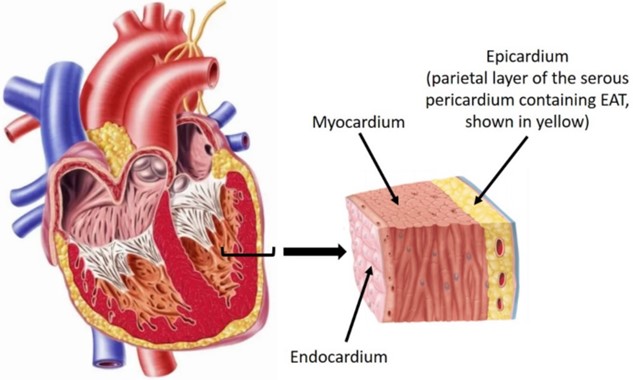
The endocardium is the thin inner lining of the heart chambers and also forms the surface of the heart valves.
Some possible explanations for the other choices are:
Choice A is wrong because the pericardium is the sac that surrounds the heart and consists of two layers: the fibrous pericardium and the serous pericardium.
Choice C is wrong because the myocardium is the thick middle layer of muscle that allows the heart chambers to contract and relax to pump blood to the body.
Choice D is wrong because epicardium is another name for the visceral layer of the serous pericardium that is fused to the heart and is part of the heart wall.
Which of the following lists best illustrates the idea of increasing levels of complexity?
Explanation
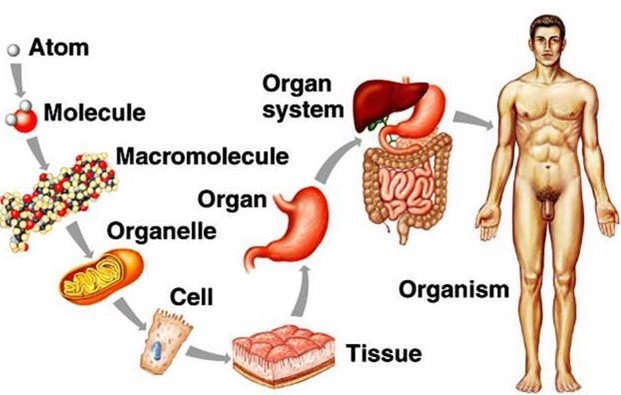
This list best illustrates the idea of increasing levels of complexity because it follows the biological hierarchy of organization from the simplest to the most complex units of matter.
Each level is composed of units from the previous level and has emergent properties that are not present in the lower levels.
Choice A is wrong because it reverses the order of organelles and cells. Organelles are subcellular structures that perform specific functions within cells.
Cells are the basic units of life that can carry out all the processes of living organisms.
Choice B is wrong because it reverses the order of tissues and organelles. Tissues are groups of similar cells that work together to perform a common function. Organelles are more basic than tissues and are found within cells.
Choice D is wrong because it reverses the order of organs and organelles.
Organs are structures composed of two or more types of tissues that perform a specific function or function.
Organelles are more basic than organs and are found within cells.
Which of the following is not an example of a negative homeostatic mechanism in the human body?
Explanation
This is because it is an example of a positive feedback loop, which amplifies the change and moves the system away from its normal state.
A negative feedback loop is a mechanism that reverses a deviation from the set point and maintains homeostasis.
Choice A is wrong because increasing heart rate and force of contraction when blood pressure falls is a negative feedback loop that restores blood pressure to normal.
Choice B is wrong because secreting insulin after a meal to return blood sugar concentration toward normal is a negative feedback loop that regulates glucose levels.
Choice D is wrong because shivering when body temperature falls below normal is a negative feedback loop that increases heat production and raises body temperature.
Normal ranges for blood pressure are 90/60 mmHg to 120/80 mmHg, for blood glucose, are 70 mg/dL to 140 mg/dL, and for body temperature are 36.5°C to 37.5°C or 97.7°F to 99.5°F.
Which of the following is the correct sequence of parts through which blood moves from the vena cava to the lungs?
Explanation
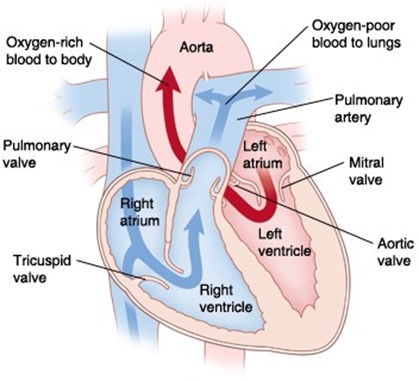
This is the correct sequence of parts through which blood moves from the vena cava to the lungs.
Choice B is wrong because it reverses the order of the right atrium and right ventricle. Blood flows from the right atrium to the right ventricle, not the other way around.
Choice C is wrong because it switches the positions of the tricuspid valve and the pulmonary valve.
Blood flows from the right atrium through the tricuspid valve to the right ventricle, and then through the pulmonary valve to the pulmonary artery.
Choice D is wrong because it also switches the positions of the tricuspid valve and the pulmonary valve, and reverses the order of the right atrium and right ventricle.
Blood flows from the right atrium through the tricuspid valve to the right ventricle, and then through the pulmonary valve to the pulmonary artery.
The normal range of blood pressure in the vena cava is about 0 to 5 mmHg, while in the pulmonary artery, it is about 15 to 25 mmHg.
The normal range of oxygen saturation in the vena cava is about 60% to 80%, while in the pulmonary vein, it is about 95% to 100%.
Which of the following has both endocrine and exocrine functions?
Explanation
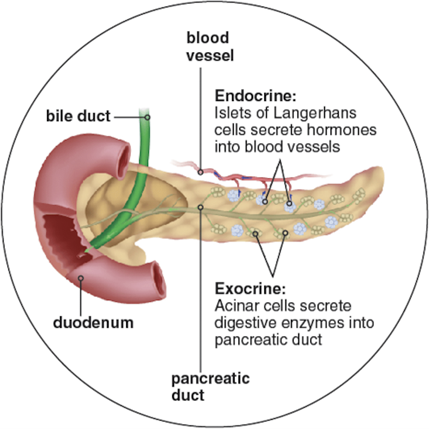
The pancreas is an organ that has both endocrine and exocrine functions.
As an endocrine gland, it secretes hormones such as insulin and glucagon that regulate blood sugar levels.
As an exocrine gland, it releases substances that neutralize stomach acid and digestive enzymes that break down proteins, fats, and carbohydrates.
Choice A is wrong because the thyroid gland is only an endocrine gland.
It secretes hormones such as thyroxine and calcitonin that regulate metabolism and calcium levels.
Choice C is wrong because the anterior pituitary is only an endocrine gland.
It secretes hormones such as growth hormone, prolactin, and adrenocorticotropic hormone that regulate growth, lactation, and stress response.
Choice D is wrong because the liver is mainly an exocrine gland. It produces bile that helps digest fats and detoxifies the blood.
The liver also has some endocrine functions, such as producing insulin-like growth factor 1 and angiotensinogen, but these are not its primary roles.
Which of the following illustrates a positive feedback mechanism?
Explanation
Uterine contractions during childbirth illustrate a positive feedback mechanism.
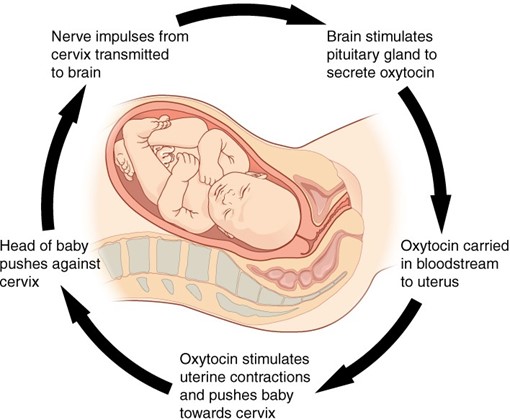
A positive feedback mechanism is a process in which the end products of an action cause more of that action to occur in a feedback loop.
This amplifies the original action.
For example, when a woman goes into labor, the pressure of the baby’s head on the cervix stimulates nerve impulses that travel to the brain and trigger the release of oxytocin, a hormone that causes the uterus to contract.
The contractions increase the pressure on the cervix, which stimulates more nerve impulses, more oxytocin, and more contractions.
This cycle continues until the baby is delivered.
Choice A is wrong because body temperature control is an example of a negative feedback mechanism, which is when the end results of an action inhibit that action from continuing to occur.
For example, when the body temperature rises above normal, the skin sweats, and blood vessels dilate to release heat.
This lowers the body temperature back to normal and stops sweating and dilation.
Choice B is wrong because control of blood sugar is also an example of a negative feedback mechanism.
For example, when the blood sugar level rises after a meal, the pancreas secretes insulin, a hormone that helps cells take up glucose from the blood.
This lowers the blood sugar level back to normal and stops the insulin secretion.
Choice D is wrong because maintaining blood pressure is another example of a negative feedback mechanism.
For example, when the blood pressure drops due to blood loss or dehydration, the heart beats faster and stronger, and the blood vessels constrict to increase the blood pressure.
This restores the blood pressure back to normal and stops the heart rate and vessel constriction.
Which of the following heart valves lies between the left atrium and left ventricle and prevents the regurgitation of blood from the ventricle back into the atrium?
Explanation
The mitral valve lies between the left atrium and left ventricle and prevents the regurgitation of blood from the ventricle back into the atrium.
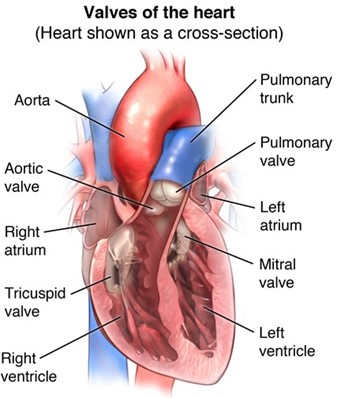
It has two leaflets that open and close to allow blood to flow from the lungs into the left atrium and then to the left ventricle.
Choice B is wrong because the tricuspid valve lies between the right atrium and right ventricle and prevents the regurgitation of blood from the ventricle back into the atrium.
It has three leaflets that open and close to allow blood to flow from the body into the right atrium and then to the right ventricle.
Choice C is wrong because the pulmonary valve lies between the right ventricle and the pulmonary artery and prevents the regurgitation of blood from the artery back into the ventricle.
It has three leaflets that open and close to allow blood to flow from the right ventricle to the lungs, where it picks up oxygen.
Choice D is wrong because the aortic valve lies between the left ventricle and the aorta and prevents the regurgitation of blood from the aorta back into the ventricle.
It has three leaflets that open and close to allow blood to flow from the left ventricle to the rest of the body.
Which of the following are agranulocytes?
Explanation
Monocytes are a type of agranulocytes, which are white blood cells that lack visible granules in their cytoplasm.
Agranulocytes also include lymphocytes, which are involved in adaptive immunity.
Choice A is wrong because basophils are a type of granulocytes, which are white blood cells that have granules in their cytoplasm.
Granulocytes also include neutrophils and eosinophils, which are involved in innate immunity.
Choice C is wrong because neutrophils are also a type of granulocyte.
Neutrophils are the most abundant white blood cells and are responsible for phagocytizing bacteria and fungi.
Choice D is wrong because eosinophils are also a type of granulocytes. Eosinophils are involved in allergic reactions and parasitic infections.
Normal ranges for white blood cells vary depending on age, gender, and health status, but generally, they are between 4,000 and 11,000 cells per microliter of blood.
Where is the location of the popliteal artery within the body?
Explanation
The popliteal artery is a continuation of the femoral artery that runs through the back of the leg and the knee.
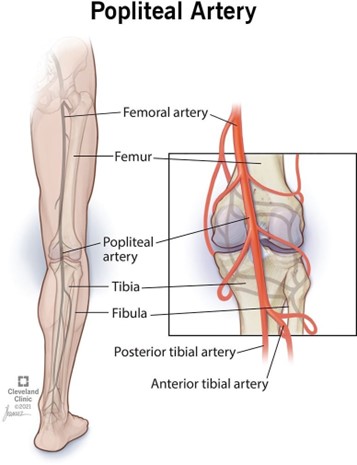
It is located in the popliteal fossa, a hollow space behind the knee. The popliteal pulse can be felt behind the knee.
Choice A is wrong because the thymus is a gland in the chest, not in the leg.
Choice B is wrong because the liver, spleen, and upper gastrointestinal tract are organs in the abdomen, not in the leg.
Choice D is wrong because the colon and rectum are parts of the large intestine, not the leg.
When a person’s pulse is taken by palpation near the thumb on the wrist, which artery is felt?
Explanation
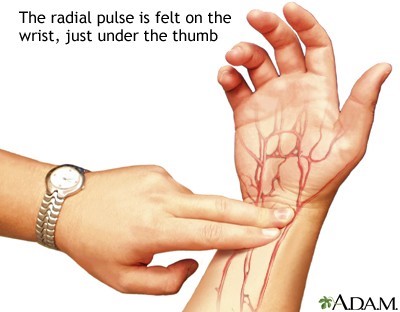
The radial artery is one of the major blood-supplying vessels to the forearm and hand.
It can be felt as a pulse near the thumb on the wrist by gently pressing the artery against the underlying bone.
This is the most commonly measured pulse by nurses to assess peripheral pulse characteristics.
Choice B.
Palmar arch arteries are wrong because these are branches of the radial and ulnar arteries that form anastomosis in the palm of the hand.
They are not palpable on the wrist.
Choice C.
The brachial artery is wrong because this is the main artery of the upper arm that bifurcates into the radial and ulnar arteries at the cubital fossa.
It can be felt as a pulse in the antecubital fossa, not near the thumb on the wrist.
Choice D
The Ulnar artery is wrong because this is another major blood-supplying vessel to the forearm and hand that runs along the medial aspect of the forearm.
It can be felt as a pulse on the little finger side of the wrist, not near the thumb.
What are pathogens?
Explanation
Pathogens are disease-causing agents. They can be bacteria, viruses, fungi, protists, or parasitic worms.
They can infect other organisms and cause various diseases.
Choice A is wrong because phagocytic leukocytes are a type of white blood cell that can engulf and destroy pathogens.
They are part of the immune system and help fight infections.
Choice B is wrong because antibodies are proteins that can bind to specific antigens on the surface of pathogens and mark them for destruction by other immune cells.
They are also part of the immune system and help fight infections.
Choice D is wrong because agents that alter DNA base sequences are not necessarily pathogens.
They can be mutagens, such as chemicals or radiation, that can cause changes in the DNA of cells.
Some mutagens can also be carcinogens, which can cause cancer.
T lymphocytes are responsible for:
Explanation
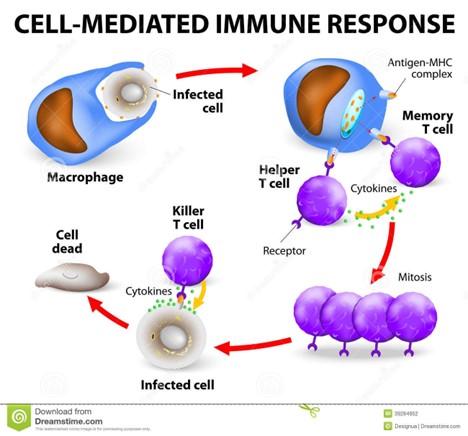
T lymphocytes, also known as T cells, are a type of white blood cell that is an essential part of the immune system.
T cells are one of two primary types of lymphocytes — B cells being the second type — that determine the specificity of immune response to antigens (foreign substances) in the body.
T cells can be distinguished from other lymphocytes by the presence of a T-cell receptor (TCR) on their cell surface.
T cells originate in the bone marrow and mature in the thymus.
After migration to the thymus, the precursor cells mature into several distinct types of T cells.
One of these types is the CD8+ T cell, also known as cytotoxic T cell, which is responsible for cell-mediated immunity.
Cell-mediated immunity is the type of immunity that involves the direct killing of infected cells and cancer cells by cytotoxic T cells.
Choice A is wrong because humoral immunity is the type of immunity that involves the production of antibodies by B cells and plasma cells.
Antibodies are proteins that bind to specific antigens and mark them for destruction by other immune cells.
Choice C is wrong because programming macrophages is not a function of T lymphocytes.
Macrophages are a type of phagocytic cell that can engulf and digest pathogens and cellular debris.
Macrophages can be activated by cytokines, which are chemical messengers secreted by helper T cells and other immune cells.
Choice D is wrong because producing antibodies is not a function of T lymphocytes.
As mentioned above, antibodies are produced by B cells and plasma cells, which are another type of lymphocyte.
The type of resistance that is acquired as a result of developing a disease is:
Explanation
Naturally acquired active immunity is the type of resistance that is acquired as a result of developing a disease.
This means that the immune system produces antibodies to fight off the infection and remembers the pathogen for future protection.
This type of immunity is long-lasting and sometimes life-long.
Choice A is wrong because naturally acquired passive immunity is the type of resistance that is acquired when a person receives antibodies from another source, such as from the mother through the placenta or breast milk.
This type of immunity is temporary and lasts only for a few weeks or months.
Choice C is wrong because artificially acquired active immunity is the type of resistance that is acquired when a person receives a vaccine that contains a weakened or killed form of the disease organism.
This triggers the immune system to produce antibodies and memory cells without causing the actual disease.
This type of immunity can last for years or decades, depending on the vaccine.
Choice D is wrong because artificially acquired passive immunity is the type of resistance that is acquired when a person receives antibody-containing blood products, such as immune globulin, that provide immediate protection from a specific disease.
This type of immunity is also temporary and lasts only for a few weeks or months.
The thymus gland secretes hormones called:
Explanation
The thymus gland is an essential part of the immune system that produces and matures T cells, a type of white blood cell that defends the body from infections.
Thymosins also regulate immune cell production and inhibit aging.
Choice A is wrong because thyroxines are hormones produced by the thyroid gland, not the thymus gland.
Thyroxines control metabolism and affect growth and development.
Choice B is wrong because melatonins are hormones produced by the pineal gland, not the thymus gland.
Melatonins control circadian rhythms and sleep cycles.
Choice D is wrong because prostaglandins are not hormones, but lipid compounds that have hormone-like effects.
Prostaglandins control inflammation, blood pressure, muscle contraction, and other functions.
The systemic circuit:
Explanation
The systemic circuit sends oxygen-rich blood to the tissues.
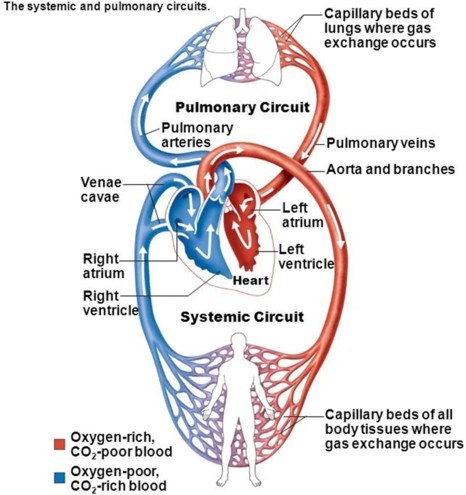
It is part of the circulatory system that carries blood away from the heart, delivers it to most of the organs and tissues, and returns it to the heart again.
Choice A is wrong because it describes the pulmonary circuit, which brings oxygen-poor blood from the heart to the lungs.
Choice B is wrong because it is the opposite of what the systemic circuit does.
The systemic circuit brings oxygen-rich blood from the heart to the tissues, not from the tissues.
Choice C is wrong because it is also the opposite of what the systemic circuit does. The systemic circuit sends oxygen-poor blood to the heart, not from the heart.
The spleen:
Explanation
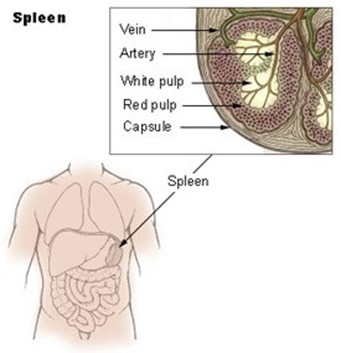
It is a major component of the lymphatic system and contains T and B lymphocytes.
Choice B is wrong because the spleen does not produce T lymphocytes, but rather stores them.
T lymphocytes are produced in the thymus.
Choice C is wrong because the spleen does not filter lymph, but rather blood. It traps bloodborne microbes and produces an immune response to them.
Choice D is wrong because the spleen consists of one lobe and is located in the upper left abdomen below the diaphragm.
The description in choice D matches the thymus, not the spleen.
The normal size of the spleen in adults is about 12 cm long, 8 cm broad, and 3-4 cm thick, weighing about 200 g.
The normal range of splenic index (the product of length, width, and thickness) is 120-480 cm.
The Thyroid gland secretes?
Explanation
The thyroid gland secretes triiodothyronine (T3), which is one of the two main thyroid hormones that affect almost every physiological process in the body.
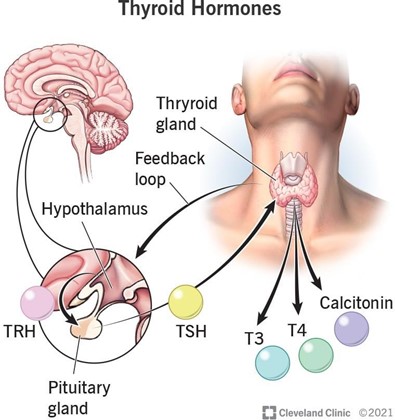
T3 is the more metabolically active hormone produced from thyroxine (T4), which is the other thyroid hormone.
Choice A is wrong because the adrenal gland secretes hormones such as cortisol, adrenaline, and aldosterone, which are involved in stress response, blood pressure regulation, and metabolism.
Choice B is wrong because the pancreas secretes hormones such as insulin, glucagon, and somatostatin, which are involved in blood glucose regulation and digestion.
Choice D is wrong because the parathyroid gland secretes parathyroid hormone (PTH), which is involved in calcium and phosphate homeostasis.
Normal ranges for T3 levels vary depending on the laboratory and the method of testing, but they are usually between 100 and 200 nanograms per deciliter (ng/dL) for total T3 and between 2.3 and 4.2 picograms per milliliter (pg/mL) for free T.
The removal of wastes produced by metabolic reactions is:
Explanation
Excretion is the process of removing metabolic wastes or excrements from the body.
Metabolic wastes are substances left over from metabolic processes (such as cellular respiration) which cannot be used by the organism and must therefore be excreted.
These include nitrogen compounds, water, CO2, phosphates, sulphates, etc.
Choice B. Absorption is wrong because absorption is the process of taking in substances into the body or cells.
It is not related to the removal of waste.
Choice C. Metabolism is wrong because metabolism is the sum of all the chemical reactions that occur in an organism.
It is not a process of removing wastes, but rather producing them.
Choice D. Assimilation is wrong because assimilation is the process of incorporating substances into the body or cells.
It is also not related to the removal of waste.
Normal ranges for metabolic wastes vary depending on the type and concentration of the waste, as well as the organism and its environment.
For example, ammonia is a very toxic waste that requires a lot of water for its excretion, while uric acid is a less toxic waste that can be concentrated into a small volume.
Some normal ranges for human metabolic wastes are:
Urea: 2.5 to 6.4 mmol/L in blood serum Uric acid: 3.4 to 7.2 mg/dL in blood serum Creatinine: 0.6 to 1.2 mg/dL in blood serum CO2: 35 to 45 mmHg in arterial blood gas
Sign Up or Login to view all the 73 Questions on this Exam
Join over 100,000+ nursing students using Nursingprepexams’s science-backend flashcards, practice tests and expert solutions to improve their grades and reach their goals.
Sign Up Now

